How to Grow and Care for Lavender: From Seed to Stunning Blooms
- January 24, 2024
- 1 comment
Master the art of growing lavender from seed to bloom with our comprehensive guide. Learn the best practices for planting, caring, and enjoying stunning lavender blooms in your garden. Lavender, with its enchanting fragrance and myriad of uses, from culinary to therapeutic, has captivated gardeners and enthusiasts worldwide. The key to unlocking its full potential lies in mastering the art of growing and nurturing it right from the seed. This guide illuminates the path to transforming a tiny seed into a flourishing plant, bursting with stunning blooms.
Table of Contents
- Why Choose Lavender for Your Garden?
- Choosing the Right Lavender Seeds
- Ideal Conditions for Lavender Seeds
- Planting Lavender Seeds
- Tips on How to Maintain and Care Lavender Plants
- Harvesting Tips for Lavender
- Uses of Lavender
- Techniques for Healthy Blooms
- Benefits of Lavender in Your Garden
- Addressing Common Blooming Issues
- Conclusion
- FAQs
Why Choose Lavender for Your Garden?
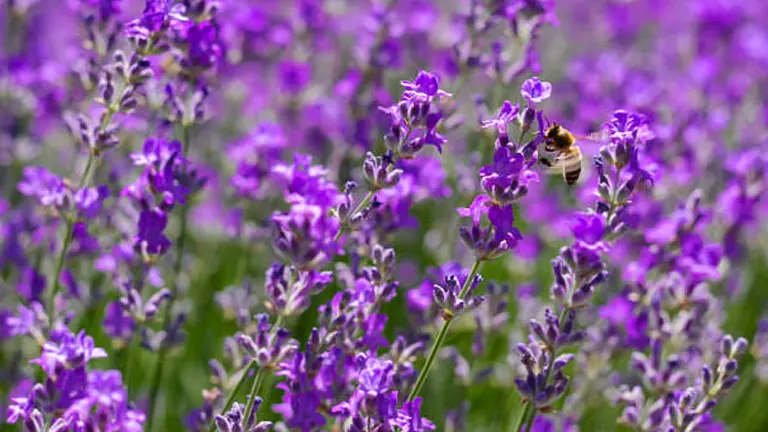
Lavender is a plant with a multitude of benefits. Its fragrance is like nature’s own stress reliever, creating a peaceful atmosphere in any garden space. The vibrant, eye-catching blooms bring a lively burst of color, enhancing the garden’s aesthetic appeal season after season. But lavender’s value extends beyond its beauty. In the kitchen, it’s a culinary favorite, infusing dishes with its unique floral notes. For wellness enthusiasts, lavender is a go-to for its calming properties, widely used in relaxation and sleep aids. It also finds its way into homes as a decorative element, with dried lavender adding a touch of rustic elegance. In essence, lavender is a gardener’s delight, offering a blend of visual beauty, practical uses, and a soothing presence, making it a worthy addition to any garden.
Choosing the Right Lavender Seeds
The secret to a flourishing lavender plant lies in the choice of seeds. Each variety of lavender, with its unique characteristics, is suited to different needs and environments:
- English Lavender (Lavandula angustifolia): English Lavender, heralded for its intense and captivating fragrance, stands out as the quintessential choice for both culinary and aromatic applications. This variety is highly sought after for its essential oils and is a favorite in the culinary world, lending a delicate, floral flavor to a range of dishes. It boasts a compact growth habit, making it suitable for smaller gardens or as a border plant.
- French Lavender (Lavandula stoechas): Renowned for its prolonged blooming period and unique flower morphology, French Lavender adds an ornamental flair to any garden setting. Its blooms are easily recognizable by the prominent bracts, or ‘rabbit ears,’ that crown the top of each flower spike. Particularly well-suited for decorative purposes, it thrives in garden beds and containers, offering a visually striking display.
- Lavandin (Lavandula x intermedia): Lavandin, a vigorous hybrid between English and Portuguese lavender, is known for its robust growth and large, showy blooms. This hardy hybrid is ideal for larger landscapes where its size and profuse flowering can be fully appreciated. It’s often used in crafting and potpourri due to the large size of its flowers and its ability to retain color and fragrance when dried.
Ideal Conditions for Lavender Seeds
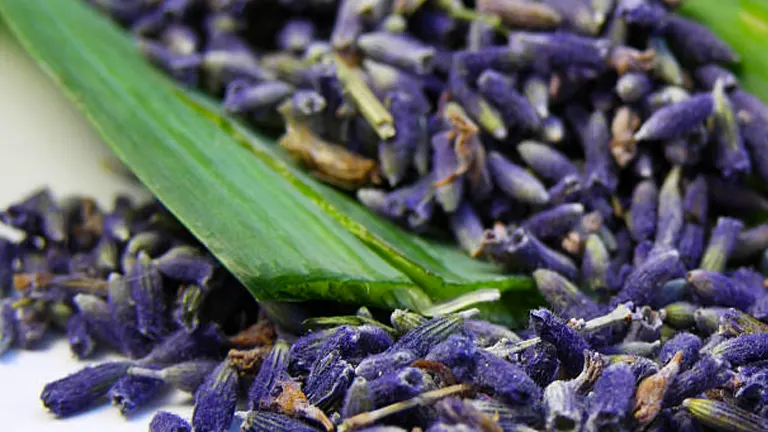
For lavender seeds to flourish, creating the right environment is key. These seeds thrive in well-drained soil, as lavender prefers a dry footing to prevent root rot. The soil should ideally be slightly alkaline, with a pH between 6.7 to 7.3. Sunlight is another crucial factor – lavender seeds need a generous amount of light, so a spot that gets full sun for most of the day is perfect. Temperature-wise, lavender seeds germinate best in mild conditions, ideally between 65°F to 70°F (18°C to 21°C). It’s also important to avoid overwatering; keep the soil moist but not soggy. With these conditions met, your lavender seeds have the best chance at a healthy start, leading to robust and fragrant plants.
Additional Tips:
- Soil Preparation: Amend heavy or clay soils with organic matter or sand to improve drainage.
- Seed Sowing Depth: Lavender seeds should be surface sown, lightly pressed into the soil, as they require light for germination.
- Watering Technique: Use a spray bottle to mist the soil, maintaining moisture without over-saturating.
- Germination Time: Expect lavender seeds to germinate in approximately 14 to 28 days, depending on conditions.
- Location Tips: A south-facing window or a greenhouse is ideal for indoor germination.
- Seedling Care: Once seedlings emerge, ensure they receive plenty of light – a grow light can be beneficial if natural light is insufficient.
- Transplanting: Seedlings can be transplanted outdoors after the risk of frost has passed and they’ve developed several true leaves.
Planting Lavender Seeds
1. Choosing the Right Time

Timing is crucial for planting lavender seeds. Starting in late winter or early spring allows seedlings to grow strong indoors, free from the threat of frost. This head start is especially important in regions with short growing seasons, ensuring that the plants are robust enough to thrive when moved outdoors.
Additional Tips:
- Indoor Start: In regions with harsh winters, begin in trays or pots indoors.
- Direct Sowing: In milder climates, you can directly sow seeds into the garden after the last frost.
2. Preparing the Soil
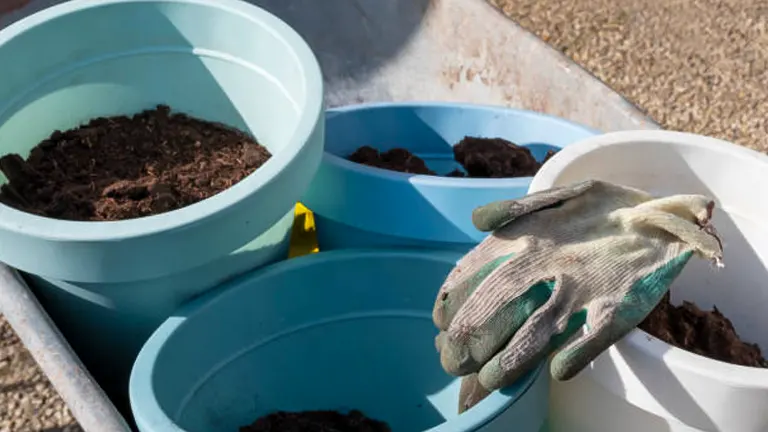
Lavender’s success starts with the right soil conditions. It prefers well-drained, slightly alkaline soil. Preparing a loose, aerated, and nutrient-rich soil mix will facilitate healthy root growth and drainage, key factors in preventing root rot and other common issues.
Additional Tips:
- Soil Composition: Mix in organic compost for nutrients.
- Drainage Improvement: Add perlite or coarse sand to heavy soils.
3. Sowing the Seeds

Lavender seeds require a careful sowing approach. They need light to germinate, so instead of burying them, you gently press them into the soil’s surface. This ensures they receive enough light and warmth to sprout effectively.
Additional Tips:
- Seed Density: Avoid overcrowding by spacing seeds about an inch apart.
- Covering: Optionally, cover the tray with clear plastic wrap to maintain humidity.
4. Providing Adequate Light and Temperature

Consistent light and temperature are vital for germination. A sunny spot, like a south-facing window, is ideal. If natural light is inadequate, especially in winter months, supplement with grow lights to mimic natural conditions.
Additional Tips:
- Grow Lights: Use LED or fluorescent grow lights if sunlight is insufficient.
- Temperature Control: Consider a heat mat for consistent soil temperature.
5. Maintaining Moisture Levels
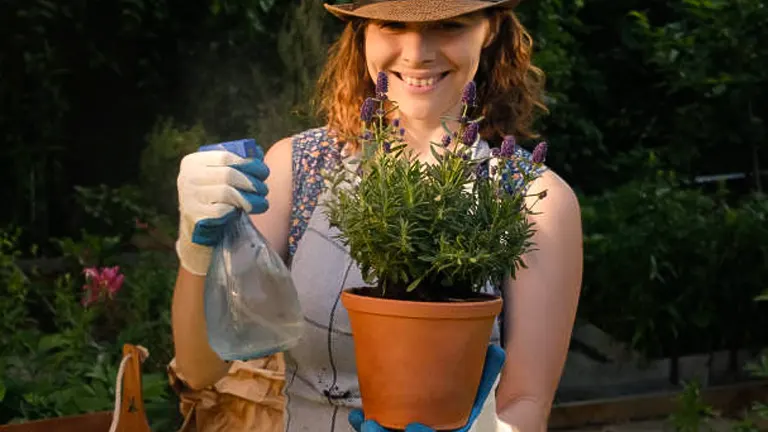
Managing moisture is a balancing act. The soil should be kept moist, but not waterlogged. Overwatering can drown the seeds or lead to fungal diseases. A regular, light misting is preferable to heavy watering.
Additional Tips:
- Watering Tools: Use a fine mist sprayer for gentle watering.
- Soil Monitoring: Check the topsoil regularly; if it’s dry to the touch, it’s time to mist.
6. Transplanting Seedlings
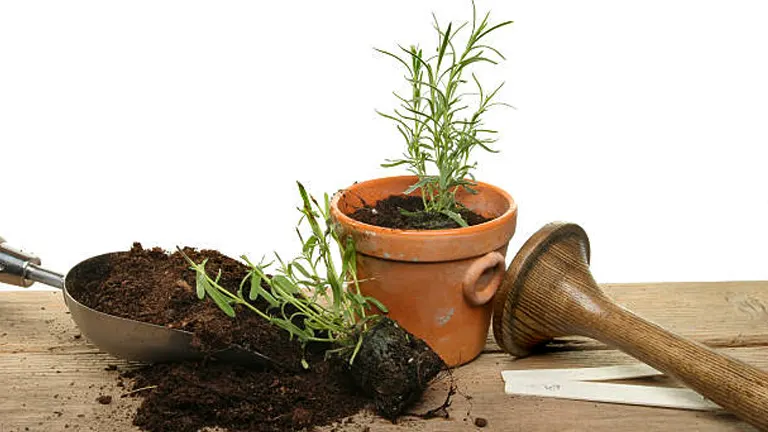
When seedlings are strong enough and have several true leaves, it’s time to move them to their final growing spot. Gradually acclimating them to outdoor conditions, a process known as hardening off, is crucial for their survival and growth.
Additional Information:
- Hardening Off Duration: Gradually increase outdoor exposure over 7-10 days.
- Spacing: In the garden, ensure each plant has enough space to grow, ideally about 18-24 inches apart.
Tips on How to Maintain and Care Lavender Plants
- Watering and Sunlight Requirements: While lavender plants are well-known for their drought tolerance, this mainly applies to mature plants. Young lavender plants need a consistent watering schedule, especially during their initial growth phase. Water them once or twice a week, being careful not to overwater, as lavender is susceptible to root rot in soggy soil. Equally crucial is sunlight exposure. Lavender thrives in full sun, requiring at least 6-8 hours of direct sunlight each day. This exposure is essential for the plant to develop its full aromatic and flowering potential.
- Soil and Fertilization Tips: Lavender plants favor well-drained, slightly alkaline soil with a pH between 6.7 and 7.3. In case of heavy or clay soils, it is beneficial to incorporate organic matter, like compost, or sand to improve drainage. Although lavender generally does not require much fertilization, a modest application of organic compost in early spring can boost growth. Avoid high-nitrogen fertilizers, as they can lead to excessive foliage at the expense of blooms.
- Pruning and Maintenance: Pruning plays a crucial role in maintaining the health and aesthetics of lavender plants. It’s recommended to prune lavender in early spring to remove dead or weak parts and to shape the plant. This not only encourages a fuller plant but also enhances blooming. After the first bloom cycle, a lighter pruning can stimulate a second bloom in the same year. Regular pruning also prevents the lavender from becoming woody and sparse.
- Winter Care and Protection: In colder climates, lavender requires some winter protection. Mulching with straw or using burlap wraps can help protect the plant from freezing temperatures and wind. It’s important to avoid heavy mulching materials like wet leaves, as they can retain moisture and lead to root rot.
- Pest and Disease Management: Lavender is relatively resistant to pests and diseases. However, it can occasionally suffer from issues like fungal infections, especially in humid conditions, or pests like aphids and whiteflies. Ensuring good air circulation around the plants and proper watering techniques can prevent most of these problems. In case of pest infestations, using a mild insecticidal soap can be effective.
- Companion Planting: Lavender pairs well with various plants in a garden setting. It can be planted alongside other drought-tolerant herbs like rosemary and sage. Lavender also complements flowering plants such as echinacea and yarrow, creating a diverse and attractive landscape while also attracting beneficial pollinators.
Harvesting Tips for Lavender
- Ideal Harvesting Time: The perfect time to harvest lavender is crucial for maximizing its aromatic potential. The best period is in the morning, just after the dew has dried but before the sun reaches its peak intensity. This is when the essential oils within the lavender are most concentrated, offering the strongest fragrance and benefits.
- Choosing the Right Stage to Harvest: The stage of bloom at which you harvest lavender is important. For the highest quality of oil or fragrance, harvest when the buds are just beginning to open. This is when the oils are most potent. If you wait until the flowers are fully open, the fragrance can be less intense, and the flowers may fall off more easily during drying.
- Proper Cutting Technique: When harvesting lavender, use sharp, clean scissors or garden shears. Cut the stem above the first set of leaves, about two to three inches from the base of the plant. This technique encourages regrowth and helps maintain a bushy, healthy lavender plant for future seasons.
- Handling the Harvested Lavender: Once harvested, handle the lavender gently to prevent bruising and loss of essential oils. Shake the stems lightly to dislodge any insects, and if necessary, you can lightly rinse them. However, ensure they are completely dry before proceeding to drying or other processing methods.
- Drying and Storing: To dry lavender, tie the stems in small bunches and hang them upside down in a warm, dry, dark place with good air circulation. This preserves the color and fragrance. Once fully dry, store the lavender in an airtight container, away from direct sunlight, to maintain its quality.
- Post-Harvest Plant Care: After harvesting, it’s a good practice to give your lavender plants some attention. Lightly pruning the plants after harvesting not only keeps them looking tidy but also encourages a second growth and can lead to a secondary bloom in some varieties.
Uses of Lavender
1. Culinary Applications
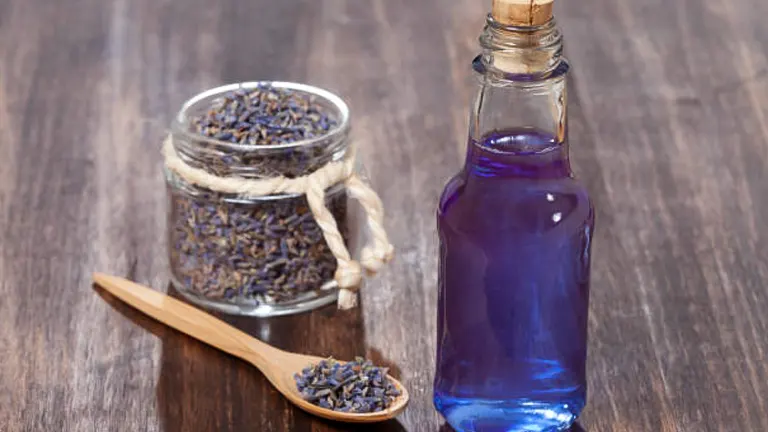
Lavender adds a unique floral note to culinary creations. When using it in cooking, it’s important to remember that a little goes a long way due to its strong flavor. Dried lavender flowers are commonly used to infuse sugars, lending a subtle aroma to baked goods and desserts. They can also be incorporated into spice rubs for meats or added to teas for a relaxing brew.
Additional Uses:
- Lavender Syrup: Ideal for flavoring cocktails, lemonades, or as a drizzle over desserts.
- Herbal Blends: Combine with other herbs like rosemary and thyme for a fragrant mix.
2. Aromatherapy
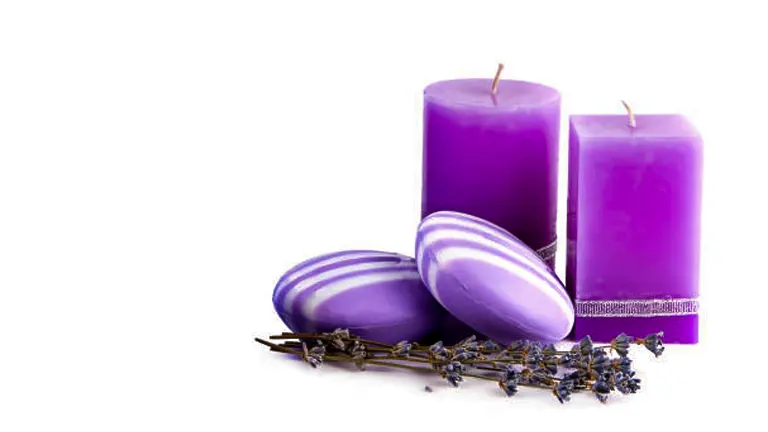
Lavender oil, known for its soothing and calming properties, is widely used in aromatherapy. Its scent is believed to help reduce stress, anxiety, and promote restful sleep. The oil can be used in diffusers to create a tranquil atmosphere in any room or added to bath products for a relaxing spa-like experience.
Additional Uses:
- Homemade Candles and Soaps: Incorporate lavender oil for a natural, soothing fragrance.
- Sleep Aids: Place a few drops on pillows or use in bedtime lotions.
Additional Tips on How to Make a Simple Lavender Oil:
1. Gather Materials:
- Fresh lavender flowers (enough to fill your jar)
- Carrier oil (such as almond or olive oil)
- A glass jar with a tight lid
- A slow cooker or double boiler
- A strainer or cheesecloth
2. Prepare Lavender:
- Dry the lavender flowers by hanging them upside down in a dark, dry place for 1-2 weeks.
3. Infusion Process:
- Fill the glass jar with dried lavender flowers.
- Pour the carrier oil over the flowers until they are completely submerged.
- Place the jar in a slow cooker or double boiler.
- If using a slow cooker, fill it with water (up to half of the jar’s height) and set it on low heat for 2-3 hours.
- If using a double boiler, place the jar in the boiler and simmer over low heat for 2-3 hours.
4. Straining:
- After cooling, strain the oil using a strainer or cheesecloth to remove all plant parts.
- Squeeze the cheesecloth to extract as much oil as possible.
5. Storage:
- Transfer the oil into a dark glass bottle.
- Store it in a cool, dark place. The oil can last up to a year.
3. Decorative Uses

Dried lavender bundles not only bring a rustic, countryside charm to any space but also retain their fragrance for a long time. They can be used in various decorative ways around the home, from wreathes to simple vase arrangements.
Additional Ideas:
- Potpourri: Mix dried lavender with other dried flowers and essential oils.
- Drawer Fresheners: Fill small sachets with dried lavender to keep linens and clothing smelling fresh.
Techniques for Healthy Blooms
Encouraging your lavender to bloom requires a balance of the right conditions. Ensure ample sunlight, good soil drainage, and proper pruning. Avoid overwatering and overfertilizing, as these can lead to more foliage and fewer flowers.
- Ensuring Ample Sunlight: Lavender thrives in full sun, requiring at least 6-8 hours of direct sunlight each day. This level of sun exposure is essential not only for growth but also for the development of the plant’s signature fragrance and vibrant blooms. Place your lavender plants in the sunniest part of your garden or, if in containers, move them to a location where they can receive maximum sunlight.
- Optimizing Soil and Drainage: Good soil drainage is critical for lavender, as it prevents root rot and other moisture-related issues. Lavender prefers well-drained, slightly alkaline soil with a pH between 6.7 and 7.3. If you’re dealing with heavy or clay soil, improve drainage by adding sand or gravel and organic matter to lighten the soil texture.
- Proper Pruning Techniques: Pruning is vital for promoting healthy blooms in lavender plants. Prune early in the spring to remove any dead or woody stems and encourage new growth. Additionally, a light pruning after the first flowering can stimulate a second bloom cycle. Avoid cutting into the old wood, as this can damage the plant.
- Watering Appropriately: While lavender is drought-tolerant, young plants need consistent watering to establish themselves. Once established, they require less water. Overwatering can lead to root rot, so allow the soil to dry out between watering sessions. This balance is crucial for the health of the plant and the abundance of blooms.
- Fertilization Strategy: Lavender generally requires little to no fertilization. Overfertilizing, especially with high-nitrogen fertilizers, can lead to lush foliage at the expense of blooms. If you choose to fertilize, opt for a low-nitrogen or balanced fertilizer and apply it sparingly in the early spring.
Benefits of Lavender in Your Garden
- Enhances Garden Aesthetics: Lavender’s striking purple blooms and lush green foliage bring a unique aesthetic to gardens. Its ability to blend with various garden styles, from formal to cottage, makes it a versatile choice for enhancing garden landscapes.
- Therapeutic and Calming Scent: The soothing scent of lavender is renowned for its therapeutic qualities. Growing lavender can transform a garden into a calming sanctuary, ideal for relaxation and stress relief, beneficial for both mental and physical well-being.
- Supports Pollinator Health: Lavender acts as a beacon for pollinators, drawing in bees, butterflies, and other beneficial insects. This support for pollinator health is crucial for maintaining a balanced ecosystem in your garden.
- Organic Pest Control: Lavender’s natural repellent properties make it an excellent organic option for controlling pests. Planting lavender can help keep away mosquitos, moths, and even deer, reducing the need for chemical pesticides.
- Diverse Culinary Applications: Lavender’s flowers and leaves can be used in various culinary preparations. From flavoring desserts and teas to creating aromatic oils and vinegars, it offers a range of uses for home cooks and chefs alike.
- Ease of Care: As a low-maintenance plant, lavender is ideal for gardeners seeking minimal upkeep. It thrives in poor soil, requires little watering once established, and is generally resilient to most pests and diseases.
- Natural Air Freshener: Beyond its use in the garden, lavender can be brought indoors to act as a natural air freshener. Its pleasant aroma can freshen up living spaces without the need for artificial scents.
Addressing Common Blooming Issues
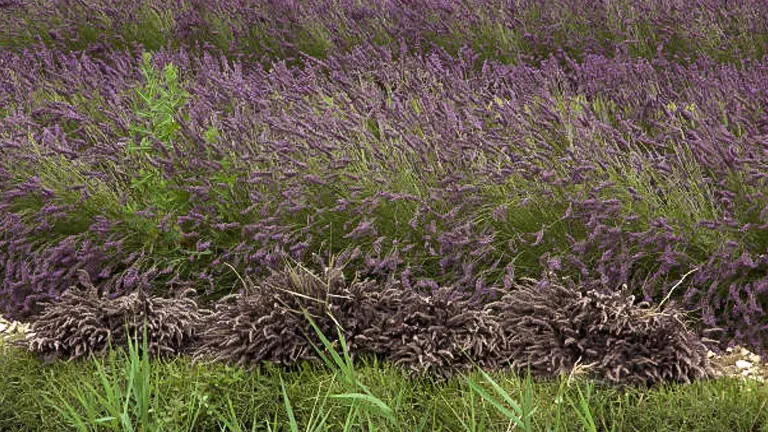
Lavender, known for its fragrant and vivid blooms, can sometimes encounter blooming issues due to various factors. One common challenge is insufficient sunlight, as lavender requires full sun to flourish. Another issue can be excessive moisture, either from overwatering or poor drainage, leading to root rot and impacting bloom production. Nutrient imbalances, particularly excessive nitrogen from over-fertilization, can lead to lush foliage at the expense of flowers. Additionally, a lack of pruning or incorrect pruning techniques can result in fewer blooms. It’s essential to understand and address these issues promptly to ensure healthy and abundant lavender blooms.
Conclusion
Growing lavender from seed to stunning blooms is a rewarding journey. By understanding the right conditions for germination, providing careful maintenance, and encouraging healthy blooms, you can enjoy the full beauty and aroma of these remarkable plants. Start your lavender journey today, and soon your garden will be a haven of tranquility and vibrant color.
FAQs
- How long does it take for lavender to bloom from seed?
Lavender typically takes about one to three years to bloom from seed. The first year is mainly about establishing roots and foliage, with blooms usually appearing in the second or third year. - Can lavender survive winter outdoors?
Yes, most lavender varieties are quite hardy. In colder climates, protect your plants with mulch or a cover. Well-drained soil is crucial to prevent root rot during wet winters. - How often should I water my lavender plants?
Young plants need regular watering but once established, lavender prefers dry conditions. Water once or twice a week initially, then reduce frequency, allowing the soil to dry out between watering. - What type of soil is best for lavender?
Lavender thrives in well-drained, slightly alkaline soil with a pH between 6.7 and 7.3. If you have heavy soil, improve drainage by adding sand or gravel. - When and how should I prune lavender?
Prune in early spring or after the first flowering. Cut back about a third of the plant, avoiding old wood. This encourages new growth and can lead to a second bloom in the same season. - Why isn’t my lavender blooming?
There could be several reasons, like insufficient sunlight, overwatering, or lack of pruning. Ensure your lavender gets plenty of sun, moderate water, and annual pruning. - Is it necessary to fertilize lavender?
Lavender generally doesn’t require much fertilizer. If needed, a light application of organic compost in the spring is sufficient. Avoid high-nitrogen fertilizers as they can promote foliage over flowers. - Can I grow lavender in pots?
Absolutely! Lavender grows well in pots. Make sure to use well-draining soil and a pot with drainage holes. Also, place the pot where it can get ample sunlight.
In embracing the journey of growing lavender, from the careful selection of seeds to the joy of its first blooms, we find a blend of patience and pleasure. This fragrant herb not only enhances the beauty of our gardens but also enriches our lives with its calming presence. Whether you’re new to gardening or have years of experience, lavender offers a world of rewards. Let these tips guide you, and soon your garden will be a serene sanctuary, adorned with the stunning elegance of lavender.

Benjamin Brooks
Forestry AuthorGreetings! I'm Benjamin Brooks, and my journey over the past 15 years has revolved around the fascinating realms of content creation, expertise in snow clearing, and the intricate world of lumberjacking and landscaping. What began as a simple curiosity about the natural world and heavy machinery has evolved into a passionate profession where my love for crafting words intertwines seamlessly with my lumberjacking and garden skills.

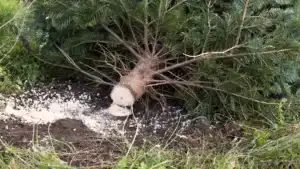


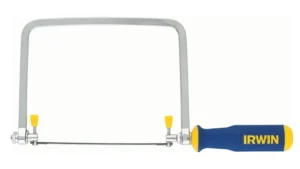
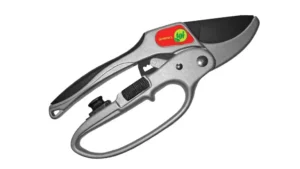
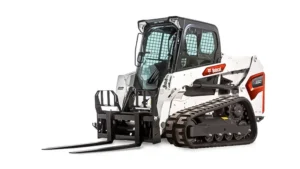
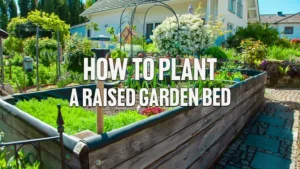
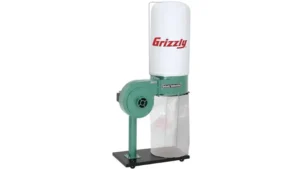




Want more information about the lavender. How can I make my own oil
Helene Schnepel
January 28, 2024 6:07 am